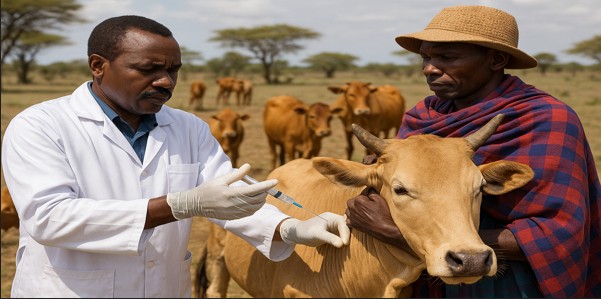Why taxing sugar, alcohol won’t solve Kenya’s consumption crisis - here’s what must change

WHO recommends that the retail price of tobacco, alcohol, and sugary drinks be increased by at least 50 per cent over the next decade through targeted taxation measures.
High taxes on sugary foods, nicotine, and other addictive substances have long been a favoured tool for reducing harmful consumption. The idea is simple: raise prices and reduce use.
The World Health Organization (WHO) advocates for a significant escalation in health taxes globally. WHO, specifically, recommends that the retail price of tobacco, alcohol, and sugary drinks be increased by at least 50 per cent over the next decade through targeted taxation measures.
More To Read
- New law lets KRA pursue digital, rental and employment taxes from non-residents
- Criminal networks exploiting instability to fuel global drug trade - UN
- Kenya Revenue Authority unveils independent customs dispute system to boost transparency
- Most packaged foods in Kenya need health warning labels - report
- KRA waives penalties, extends tax filing deadline to July 5
- Step by step guide on how to file your tax returns
This level of increase, according to WHO studies, has the potential to dramatically reduce consumption, save millions of lives, and simultaneously generate public revenue that can be reinvested in health promotion, disease prevention, and universal health coverage.
In addition to direct health benefits, these taxes are seen as a way to correct market failures—where harmful products are underpriced relative to the long-term costs they impose on society, including increased healthcare costs, reduced productivity, and premature death
Kenya has made progress in reducing tobacco use among adults, but among young people, the situation is moving in the opposite direction. While traditional cigarette smoking is declining, the use of alternative nicotine products such as e-cigarettes, smokeless tobacco, and nicotine pouches is rapidly rising—especially among teenagers and young adults.
This shift signals a new public health challenge. Young Kenyans are increasingly using nicotine in forms that are cheap, discreet, flavoured, and often perceived as harmless. Unfortunately, many of these products fall outside the reach of current tax policies or regulatory enforcement. As a result, the country’s existing tobacco control strategies—largely focused on taxation—are proving inadequate for today’s evolving market and youthful audience.
Informal sales and weak enforcement
A 2022 NACADA survey of university students found that more than a quarter of them were current substance users, with a rising number using nicotine pouches and vapes. Among Kenyans aged 15 to 24, over seven per cent have used tobacco products, and more than three per cent reported having tried e-cigarettes. Alarmingly, the Tobacco Control Board found that over a third of university and college students in Kenya now use some form of tobacco or nicotine—three times the national average among adults.
What makes these products so accessible to youth is not just their design or pricing, but the ways they are distributed. In many low-income neighbourhoods and urban centres, young people can easily purchase single cigarettes from local kiosks or street vendors. Although selling single sticks is illegal, enforcement remains weak, and vendors rarely ask for age identification. In the case of smokeless tobacco, such as kuber, snuff, or the increasingly popular “ndovu”—small, flavoured sachets are sold discreetly and cheaply, often near schools. Some students are obtaining nicotine products through informal school networks.
In several towns, there have been reports of boda boda riders delivering products like vapes and pouches directly to students during or after school hours. In some instances, even school staff have been implicated in facilitating access. Peer influence and informal sharing among classmates also play a major role, making nicotine use not only easy but socially normalized in school environments.
The digital space presents yet another challenge. A growing number of nicotine product sales now take place online, especially through platforms like WhatsApp, Instagram, and Telegram. These platforms make it easy for youth to order discreetly, without ever showing proof of age. The products are then delivered by courier—bypassing physical retail checks altogether.
Meanwhile, aggressively marketed nicotine pouches and vapes use influencers and digital ads that target young consumers with trendy designs, fruity flavours, and misleading claims of safety.
The consequences of this unchecked exposure are far-reaching. Nicotine is highly addictive, especially when introduced during adolescence. It interferes with brain development, reducing impulse control and increasing susceptibility to future substance abuse.
Early nicotine use is also strongly linked to long-term addiction, respiratory illness, cardiovascular disease, oral cancer, and mental health disorders. Smokeless products, which many youth assume are safer, have been associated with severe oral health problems, gum disease, and an increased risk of stillbirth in pregnant users.
These health issues place a growing burden on Kenya’s already overstretched healthcare system. Treating tobacco-related illnesses costs the country billions of shillings each year. The younger the user, the earlier chronic health conditions begin to appear, straining the public health infrastructure.
Complexity of taxation
While the idea of high taxes may seem effective, it can have unintended consequences. In Kenya, for example, increased taxation on alcohol has contributed to a surge in the consumption of illicit brews, which now account for approximately 60 per cent of all alcoholic beverages consumed, marking a significant increase in recent years.
This surge is largely driven by high excise taxes on legal alcohol, which have made officially licensed products less affordable for many consumers. As a result, a growing number of people are turning to cheaper, illegal alternatives available through informal channels such as street vendors, kiosks, and even homes. Traditional homemade brews like chang’aa and muratina dominate the illicit market in volume, while counterfeit and smuggled spirits make up much of their monetary value.
The widespread consumption of illicit alcohol poses serious challenges, not only for public health but also for the economy. The Kenyan government loses an estimated Sh120 billion annually in tax revenue due to the proliferation of illegal alcohol, with losses increasing sharply due to smuggling and counterfeit products.
Experts argue that addressing this complex issue requires a multifaceted approach that includes tighter regulation of ethanol production and distribution, regional coordination of excise taxes, enhanced public awareness campaigns, and stronger enforcement against illicit trade networks.
On the other hand, consumption of sugary foods and drinks remains high. According to reports from the Food and Agriculture Organisation (FAO) and local health researchers, sugar-related habits are deeply embedded in Kenyan culture. For instance, sugary sodas are often served at communal gatherings, even in rural areas.
Despite the taxes, there has been little visible change in consumer behaviour. A study published by The Conversation highlighted that Kenya lacks a dedicated sugar-sweetened beverage (SSB) tax, and there are major gaps in tracking consumption data and linking it to health outcomes.
One key reason for the weak impact of taxation is the supply chain and political economy of sugar in Kenya. The sugar industry is protected due to its role in job creation and agriculture. Major beverage companies also maintain a strong lobbying presence, limiting the government’s willingness to impose stricter public health taxes. Without accompanying reforms or education, taxes alone appear ineffective.
Successes and limitations abroad
A 2021 study by researchers at the University of Nairobi and The Conversation explored why Kenya hasn’t introduced a standalone sugar tax. They found that sugar industry lobbying, a lack of political will, and limited public awareness have stalled health-focused tax reforms. The researchers concluded that public education, advocacy, and a strong evidence base are critical to creating meaningful policy change.
In contrast, Mexico introduced a national sugar tax in 2014, coupled with strong public health campaigns. Within a year, sugary drink purchases dropped by 12 per cent, with the largest decrease seen among low-income households. This success wasn’t just about price—it was also about shifting public attitudes and raising awareness of sugar’s health risks.
Other countries offer similar lessons. In South Africa, a sugar tax reduced purchases by nearly 5 grams per person per day. However, long-term behaviour change remained elusive without continued public engagement. In Saudi Arabia, a steep 50 per cent tax on sugary beverages failed to significantly reduce consumption over five years, because the price hike alone wasn’t enough to shift entrenched consumer habits.
Studies suggest that several key components are essential to complement taxation efforts. Public education campaigns play a vital role in shifting consumer perceptions and raising awareness about the health risks associated with excessive sugar and addictive substance consumption.
Front-of-package labelling, including graphic warnings, helps make sugar content more visible and understandable, empowering consumers to make healthier choices. Marketing restrictions, particularly those aimed at shielding children from targeted advertising, are crucial in preventing early exposure and addiction.
Robust data collection and monitoring systems are also necessary to track consumption trends and assess the impact of interventions over time. reinvesting tax revenues into health promotion initiatives, school nutrition programs, and community outreach ensures that the benefits of taxation translate into tangible improvements in public health.
Top Stories Today











































